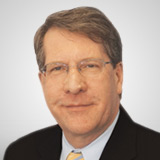Inflation probably peaked for this cycle, but the Federal Reserve still has a lot of work to do, suggests retirement strategist Bob Carlson, editor of Retirement Watch.
Investors already fooled themselves a couple of times in 2022 by concluding prematurely that the Fed was done tightening monetary policy and soon would adopt a looser one.
The expectation of easier monetary policy is premature. The steady 0.75% increases in the Fed funds rate probably will stop, but tightening will continue at a slower pace. Tightening money at a slower pace is far from the change to an easy monetary policy that’s priced into the markets.
In addition to raising interest rates, the Fed is steadily draining liquidity from the markets and economy by reducing its balance sheet and the monetary base. It continues to reduce the balance sheet significantly each month, independent of changes in interest rates.
The Fed leaders say they will maintain a tight monetary policy until inflation nears its 2% target rate. Most Fed members don’t want to ease too soon, because that would raise the risk of stagflation (slow growth and high inflation). Inflation usually doesn’t turn down for good until sometime during a recession.
The Fed won’t stop tightening until it sees significant changes in the labor market and inflation, though it already set the table for those changes.
Investors are expecting a fast change in the Fed’s policy, but there could be a long time between the end of tightening and a shift to easy monetary policy. Bear market bottoms in stocks typically don’t occur until the Fed switches to an easy policy and begins lowering interest rates.
Meanwhile, income investments are looking more attractive than they have in years and will become more attractive in the coming months. I continue to believe we’ll have a more serious recession and decline in earnings than is reflected in market prices. That’s why we’re invested in four flexible funds that can adapt to changing market conditions.
Moving mostly in the opposition direction of the major indexes is Hussman Strategic Growth (HSGFX). One prong of the fund’s two-pronged strategy is to buy stocks of companies with growth rates that aren’t fully reflected in the stock prices. The fund recently owned 273 stocks, none of which is more than 2% of the fund.
The second prong is to use futures and options contracts to either leverage the stocks in anticipation of positive returns or hedge the stocks against a market decline.
Manager John Hussman uses valuations (a long-term indicator) and a collection of data he calls market internals (a shorter-term indicator) to determine the futures and options positions.
For most of the last few years, the fund has been fully hedged against a market decline. That’s generated solid returns in 2022, though the fund loses value during bear market rallies. Hussman says bear markets tend to unfold in waves, with market declines interrupted by fast, furious rallies that falter.
He’ll reduce the hedges when market internals indicate the rallies might persist for a while. But in general, his models indicate the fund will be hedged against a market decline for a while yet.
Another flexible fund is Cromwell Marketfield (MFADX). It can invest in pretty much any publicly traded asset. It also can sell short stocks and use futures and options. The fund develops themes about what it believes is likely to happen in the economy and markets that isn’t reflected in market prices. It invests in several themes simultaneously and seeks themes that are uncorrelated with each other.
Themes for most of 2022 have been that energy prices are likely to rise, and inflation will be higher than was priced into the markets. The fund also invested with the view that several market sectors were overvalued and sold short stocks in those sectors.
Leuthold Core Investment (LCORX) determines its asset allocation using models and indicators the firm developed and has used for over 40 years. It can invest in most publicly traded securities, increase cash and sell short. It also can overweight or underweight stocks and stock sectors. The firm’s models assess both value and momentum in the markets.
The fund generally has been bearish on both stocks and bonds in 2022, reducing bonds to their lowest allocation ever. At one point, almost 40% of the fund was in cash. LCORX owned stocks in the sectors with the lowest valuations and sold overvalued sectors short.
Recently, the fund continued to have historically low allocations to U.S. bonds. About 13% of the fund was in international bonds. Only 4% is in cash and another 2% is in gold. About 54% of the fund was invested in U.S. stocks, but 19% of the fund was hedging or selling short stocks.





















